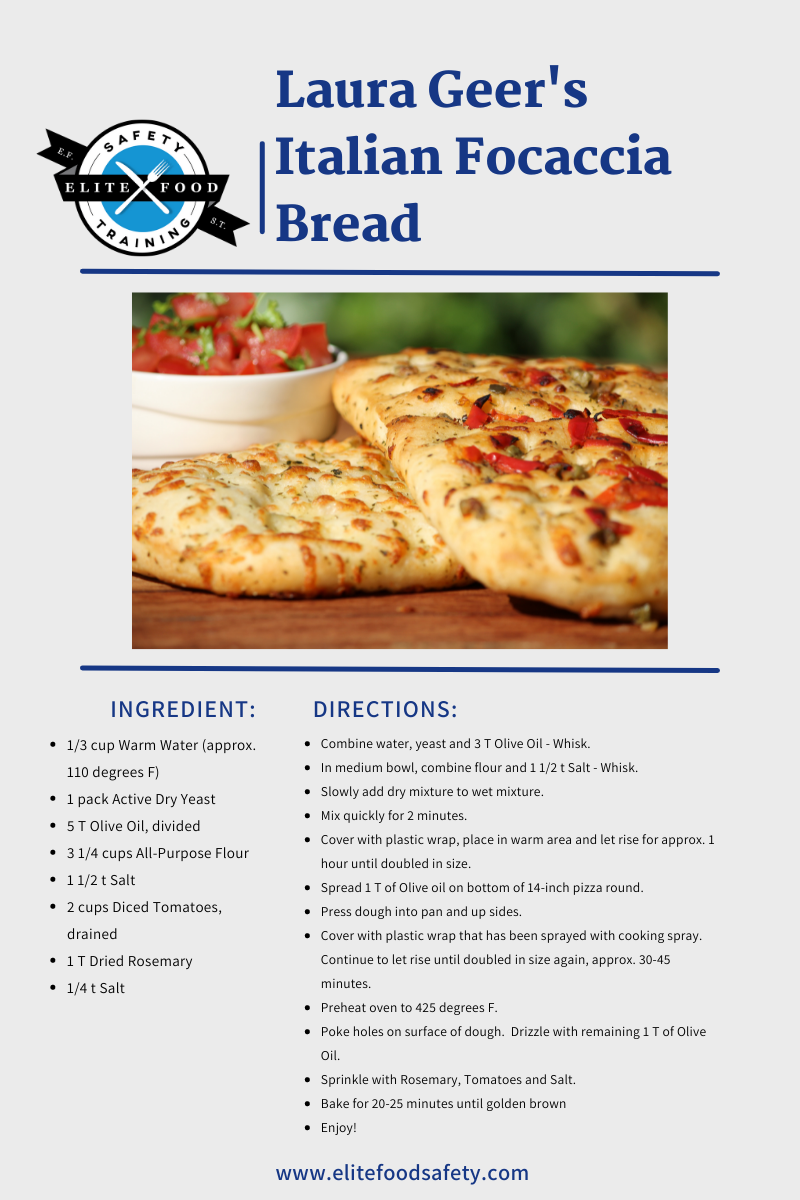
Welcome to Week 3 of National Food Safety Month!
So far, we have covered 2 of the 4 foundational steps to food safety - CLEAN and SEPARATE. This week we are going to look at the 3rd step - COOK.
This is a big one! There is so much information involved in this one topic. We are going to break it down and look at proper cooking temperatures, how to temp foods and how to stay sanitary and safe during the cooking process. Taking time to cook foods properly can be a major challenge in this fast-paced industry.
Let's jump in!
Proper cooking temperatures
It can be hard to keep all your different food temps straight. Especially when one product may have a different cooking temp depending on which form it is in. For example, whole lobster which should be cooked to 145 degrees F vs. stuffed lobster which should be cooked to 165 degrees F. Let's go over the most common foods and their corresponding minimum internal cooking temperatures. Be sure to review the guidelines by ServSafe for specific foods not listed here.
165 degrees F for <1 second (or instantaneous)
- All poultry, such as whole or ground turkey, chicken or duck
- Stuffing made with poultry, fish or meat
- Stuffed foods such as pasta, poultry, seafood and meats
- Dishes that contain previously cooked TCS foods (reheating)
155 degrees F for 17 seconds
- Ground meats (not including poultry)
- Ground seafood
- Ground commercially raised game
- Shell eggs being hot held for service
145 degrees F for 15 seconds
- Seafood (fish, shellfish, crustaceans)
- Steaks or chops of meat such as pork, beef, veal and lamb
- Commercially raised game (not ground)
- Shells eggs being served immediately
145 degrees F for 4 minutes
- Roasts (including pork, beef, veal and lamb)
- Additional cooking times by weight can be found in the ServSafe Manager's Certification book.
135 degrees F
- Plant based foods such as rice, vegetables, pasta, fruits and legumes that will be hot held for service
How to properly temp foods
Along with knowing WHAT the proper cooking temperature is - you should know HOW to properly temp foods. Before you actually temp any foods, you must be sure that your thermometer is accurate. Follow the appropriate procedures for your specific thermometer type. The most common thermometer used to temp foods is the Bimetallic Stemmed Thermometer. You can calibrate this either through the Ice-Point Method or the Boiling-Point Method. The Ice-Point Method is the safest option, follow the guidelines recommended by ServSafe for properly calibrating this type of thermometer.
Once your thermometer is calibrated you are ready to temp your foods. Always temp in the thickest part of the food, as this will be the area with the lowest temperature reading. Different foods require different holding times for their minimum internal temperatures. Refer to the list of temps above for the minimum holding times associated with each food. It is also recommended that you take multiple readings in different parts of the food for the most accurate reading. Once the thermometer is inserted, you must hold it until the reading is steady.
How to stay sanitary during the cooking process
In the fast-paced environment of the food service industry it can be very challenging to take extra time during your cooking process to focus on being sanitary and safe. As challenging as it may be, it is vital. There are many different points during the cooking process that something could potentially go wrong. We can't possibly cover every scenario - but here are a few tips to make the process safer:
- Use separate utensils for raw products and cooked/finished products. You don't want to use tongs to place raw chicken on the grill and immediately use those same tongs to remove fully cooked chicken for service. This results in cross-contamination.
- Wash your hands and change gloves regularly. After 4 hours of continuous use or whenever they have been contaminated and soiled or torn.
- Make sure all sanitation buckets and cloths are at the correct strength using test kits. If cloths or water becomes soiled, refresh and change right away.
- Remove aprons anytime you are leaving the prep/cooking area to avoid any cross-contamination. Especially when using the restroom.
- Avoid eating or drinking in any area NOT designated for this purpose. There should be no food or drink in prep areas. An exception to this may be a water cup with a sip top lid or straw that remains covered and placed away from food.
Tip of The Week
Calibrate your thermometers at the beginning of your shift or every morning. This ensures they are ready to go and accurate. You can have peace of mind during the rush that your temps are correct.
Marketing Director, Laura Geer's Favorite Italian Focaccia Bread


.png)
.png)
-2.png)
-2.png)
.jpg)
